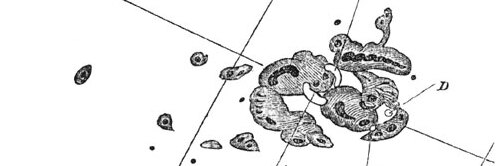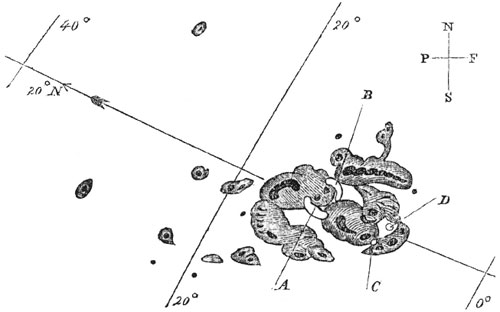Disturbances on the Sun can cause the expulsion of radiation and plasma in the form of solar storms, which can emanate outwards and impact the entire Solar System. One of the events associated with this type of solar activity is a coronal mass ejection (CME), which causes the release of massive quantities of matter and magnetic flux from the Sun. If a CME reaches the Earth, the interaction with our planet’s magnetosphere can cause geomagnetic storms, aurorae, and even damage to electrical power grids. This is what happened between September 1 and September 2, 1859, when the strongest geomagnetic storm ever recorded hit the Earth, an event known as the Carrington Event.
On September 1, 1859, British astronomers Richard Carrington and Richard Hodgson independently observed a bright emission of radiation from the Sun. This was the first recorded observation of a solar flare, and this event was associated with the geomagnetic storm that followed shortly afterwards. According to modern studies, a massive CME happened together with the solar flare, and reached the Earth almost 18 hours later. This was much faster then typical CMEs, which usually take a few days to reach the Earth.
Sunspots on September 1, 1859, drawn by Richard Carrington.
As the geomagnetic storm hit our planet, the effects were visible everywhere. One of the most notable effects of the storm was that aurorae were seen from almost every corner of Earth. While usually aurorae are only visible in the polar regions, during the Carrington Event aurorae could be seen all the way to tropical latitudes, including in Hawaii and Central America, and even in Colombia, almost at the Equator. In the United States, the aurorae were described as more luminous than the full Moon, and so bright that people could read newspapers just with the aurora’s light, while miners in the Rocky Mountains woke up because of the glow, and began preparing breakfast thinking it was morning.
While the beautiful lights glowing up in the sky amazed people all over the world, the geomagnetic storm also caused widespread damage. Telegraph systems failed all over Europe and North America, and sometimes gave electric shocks to operators, while telegraph pylons grew sparks. Many operators disconnected their power supply to save their telegraph, but in some cases they were still able to send messages because of the geomagnetically induced current from the electromagnetic field. Two American operators in Boston, Massachusetts, and Portland, Maine, were able to carry on a conversation for two hours using no battery power at all, and even reported that the system was working better with just the induced current.
This storm took the name of Carrington Event based on the description of the sunspots and solar flare associated with the event by Richard Carrington. Since 1859, various other geomagnetic storms hit our planet, but none were as powerful as the Carrington Event. Among the most notable ones are the storms of 1921, 1938, 1972, 1989, and 2003, all of which caused damage to electrical grids, power outages, and communications blackout. In 2012, an unusually strong geomagnetic storm, with a similar intensity to the one that caused the Carrington Event, narrowly missed the Earth.
More recently, in May 2024 a series of solar storms hit our planet. This was the strongest geomagnetic storm to affect the Earth since 1989, and caused aurorae to be visible all the way to Northern Africa, Central America, and India in the Northern Hemisphere, and Brazil, Namibia, and northern Australia in the Southern Hemisphere. However, the storm didn’t cause much damage.
Aurora seen from Melbourne, Australia, in May 2024 (Yash Soorma, Wikimedia Commons, CC BY-SA 4.0).
All these events are a reminder of how dangerous geomagnetic storms can be to our infrastructure. A report published in 2008 by the National Academy of Sciences of the United States argued that a Carrington-class event today could cause the failure of communications satellites, and a large-scale Internet outage that could last for months.
Storms like the ones that caused the Carrington Event aren’t even the strongest type of geomagnetic storms that can affect the Earth. An even stronger class of storms known as Miyake event, related to extremely intense solar flares, can cause huge spikes in the concentration of carbon-14, which can be observed in tree rings. A few such events are now known to have happened, with the strongest one being around the year 12,350 BCE. The strongest Miyake events in recorded history happened in 774 and 993, both of which are confirmed by numerous observations of aurorae by contemporary sources all over the world. This kind of solar storm is quite rare, and we don’t know how frequent it is, but a Miyake event happening today might result in significant global damage to satellites, telecommunications, and power grids.



